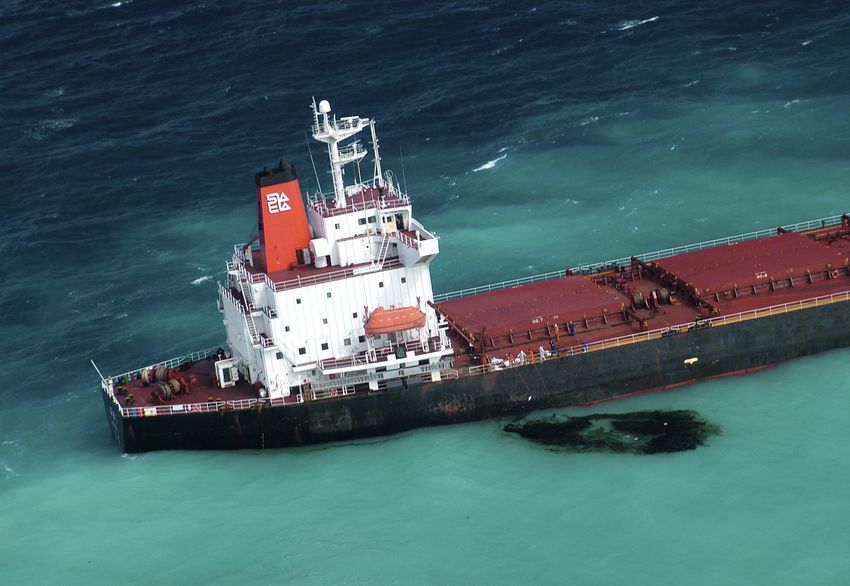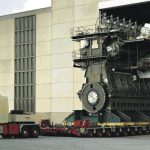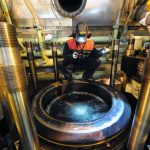Oil spills are among the most destructive environmental disasters, causing long-term damage to marine life, coastal ecosystems, and economies. When a spill occurs, marine engineers must act quickly to contain and clean up the oil before it spreads.
In this article, we’ll explore how marine engineers prevent oil spills from spreading, the technologies they use, and the challenges they face. 🚢⚙️
1. Why Are Oil Spills So Dangerous? 🛢️⚠️
Oil spills pollute oceans, harm wildlife, and disrupt industries like fishing and tourism.
🔹 How Oil Spreads on Water 🌊
When oil spills into the ocean, it spreads quickly, forming a thin layer (oil slick) on the surface.
✅ Light Oils (Diesel, Gasoline) – Evaporate quickly but are highly toxic.
✅ Heavy Oils (Crude, Bunker Fuel) – Stick to marine life and persist for decades.
📍 Example: The Deepwater Horizon spill (2010) released 4.9 million barrels of oil, devastating the Gulf of Mexico.
2. How Marine Engineers Prevent Oil Spills from Spreading 🚢🛠️
Marine engineers use containment strategies, cleanup technologies, and emergency response plans to control oil spills.
🔹 1. Containment Booms (Floating Barriers) 🏗️🌊
✅ Booms are floating barriers that stop oil from spreading.
✅ Deployed immediately after a spill to create a containment zone.
📌 Types of Booms:
| Type | Used For |
|---|---|
| Absorbent Booms 🧽 | Soak up light oil spills near shorelines. |
| Hard Booms 🚧 | Made of metal/plastic, used for large spills at sea. |
| Fire-Resistant Booms 🔥 | Contain oil for controlled burning. |
📍 Example: Booms helped contain the Exxon Valdez spill (1989) in Alaska.
🔹 2. Skimmers (Oil Collection Devices) 🚢🛢️
✅ Skimmers remove oil from the water surface using suction or absorption.
✅ Used inside containment booms to recover oil before it reaches the shore.
📌 Types of Skimmers:
| Type | How It Works |
|---|---|
| Weir Skimmers 🌊 | A floating barrier lets oil flow in and pumps it out. |
| Brush Skimmers 🖌️ | Rotating brushes pick up oil and separate it from water. |
| Vacuum Skimmers 🧹 | Use suction to remove oil directly from the surface. |
📍 Example: Skimmers recovered over 800,000 barrels of oil after the Deepwater Horizon spill.
🔹 3. Dispersants (Oil-Breaking Chemicals) 🧪💨
✅ Dispersants break oil into tiny droplets, allowing it to mix with water and degrade naturally.
✅ Sprayed from ships, planes, or underwater nozzles.
📌 Pros & Cons:
✅ Speeds up oil breakdown by marine bacteria.
❌ Can harm marine life if used in large amounts.
📍 Example: Over 1.84 million gallons of dispersants were used during the Deepwater Horizon spill cleanup.
🔹 4. Controlled Burning (In-Situ Burning) 🔥
✅ Burning the oil at sea removes large amounts quickly.
✅ Works best when oil is fresh and contained by fire-resistant booms.
📌 Pros & Cons:
✅ Removes up to 98% of oil from the water.
❌ Produces air pollution (black smoke).
📍 Example: Controlled burns removed 400,000+ barrels of oil from the Gulf of Mexico spill.
🔹 5. Oil-Eating Microbes (Bioremediation) 🦠🌱
✅ Microorganisms break down oil naturally into harmless substances.
✅ Used for long-term cleanup after initial containment.
📌 Pros & Cons:
✅ Eco-friendly and works on all oil types.
❌ Takes weeks or months to be effective.
📍 Example: After the Exxon Valdez spill, scientists used oil-eating bacteria to help restore Alaska’s coastline.
3. Engineering Innovations in Oil Spill Prevention 🚀🔬
Marine engineers are developing advanced technologies to improve oil spill response.
🔹 1. AI & Satellite Monitoring 📡🤖
✅ AI detects oil spills in real-time using satellite images.
✅ Helps deploy booms and skimmers faster.
📍 Example: The European Space Agency (ESA) uses satellites to monitor oil leaks from ships.
🔹 2. Underwater Oil Capture Systems 🌊🛠️
✅ Deep-sea oil spills (like Deepwater Horizon) are harder to control.
✅ New robotic systems capture oil leaks at the ocean floor.
📍 Example: The Containment Dome used in Deepwater Horizon collected leaking oil from the seabed.
🔹 3. Oil-Absorbing Nanomaterials 🧪
✅ Special sponges and gels absorb oil without soaking up water.
✅ Can be reused multiple times to clean large spills.
📍 Example: MIT researchers developed a graphene sponge that absorbs oil 10x faster than traditional methods.
4. Challenges in Oil Spill Response 🚧🌊
Despite modern technology, oil spill prevention still faces major challenges:
| Challenge | Impact | Solution |
|---|---|---|
| Extreme Weather 🌪️ | High winds spread oil faster. | Deploy booms before storms hit. |
| Deepwater Leaks 🛢️ | Hard to contain oil at the ocean floor. | Use robotic capture domes. |
| Toxicity of Dispersants ☠️ | Can harm marine life. | Use eco-friendly bioremediation. |
| Slow Response Time 🕒 | Oil spreads rapidly. | Improve real-time detection with AI. |
📍 Example: During the BP oil spill, bad weather delayed response efforts, making cleanup harder.
5. Future of Oil Spill Prevention & Cleanup 🌍🔬
Marine engineers are working on next-generation technologies to make oil spills a thing of the past.
🔹 1. Hydrogen-Powered Cleanup Ships 🚢⚡
✅ Green energy-powered ships can respond faster.
✅ Reduce emissions during cleanup efforts.
📍 Example: Norway is developing hydrogen-powered skimmer ships for rapid oil spill response.
🔹 2. Autonomous Oil Recovery Drones 🤖
✅ AI-controlled drones will detect and remove oil spills without human crews.
✅ Faster, safer, and more cost-effective.
📍 Example: Researchers are testing robotic oil cleanup boats that operate autonomously.
🔹 3. Biodegradable Oil Spill Barriers 🌱
✅ Eco-friendly barriers made from plant-based materials can replace synthetic booms.
✅ Decomposes naturally after use, reducing waste.
📍 Example: Scientists are developing seaweed-based oil barriers that are fully biodegradable.
6. Conclusion 🏆🌊
Preventing oil spills from spreading requires engineering expertise, rapid response, and advanced technology. Marine engineers continuously innovate to make cleanup faster, safer, and more effective. As new green technologies emerge, we move closer to a future with cleaner oceans.
🚀 Want to explore more? Check out live oil spill monitoring maps online!


